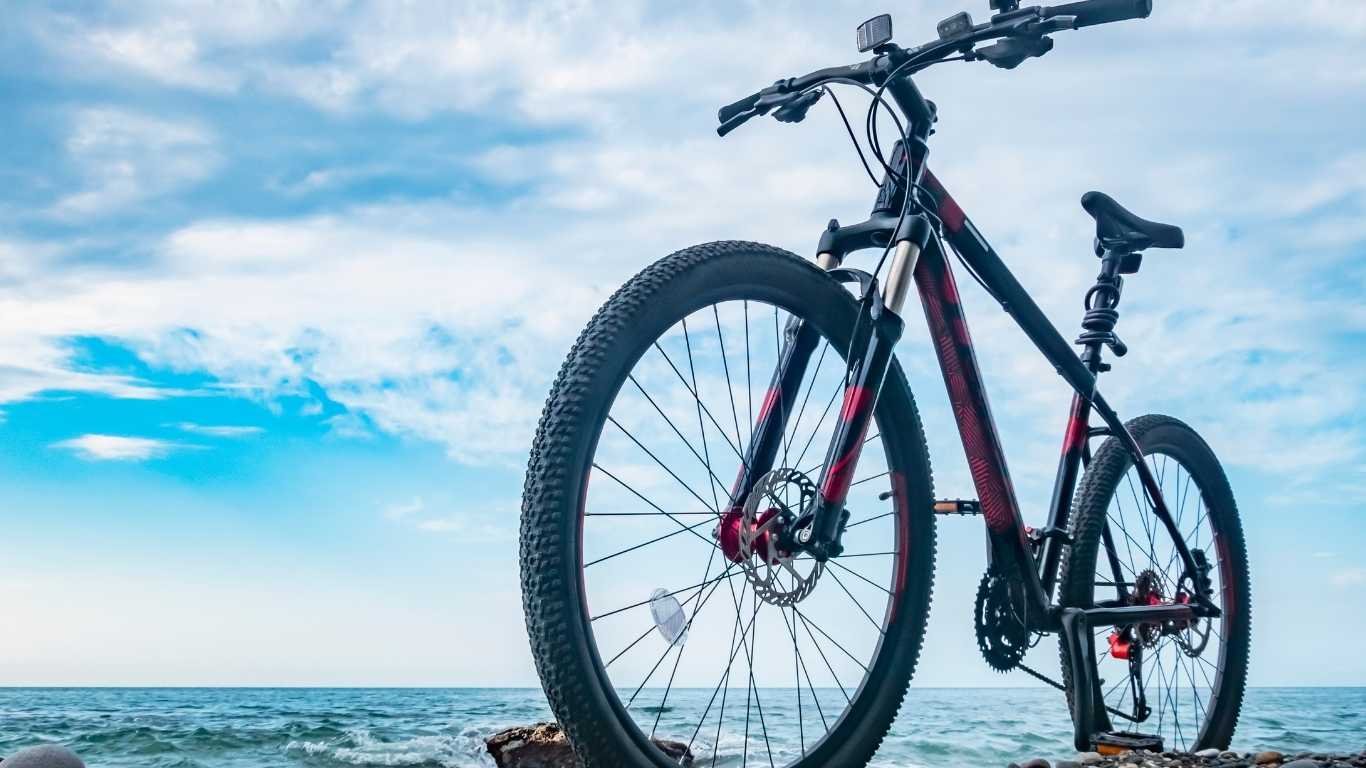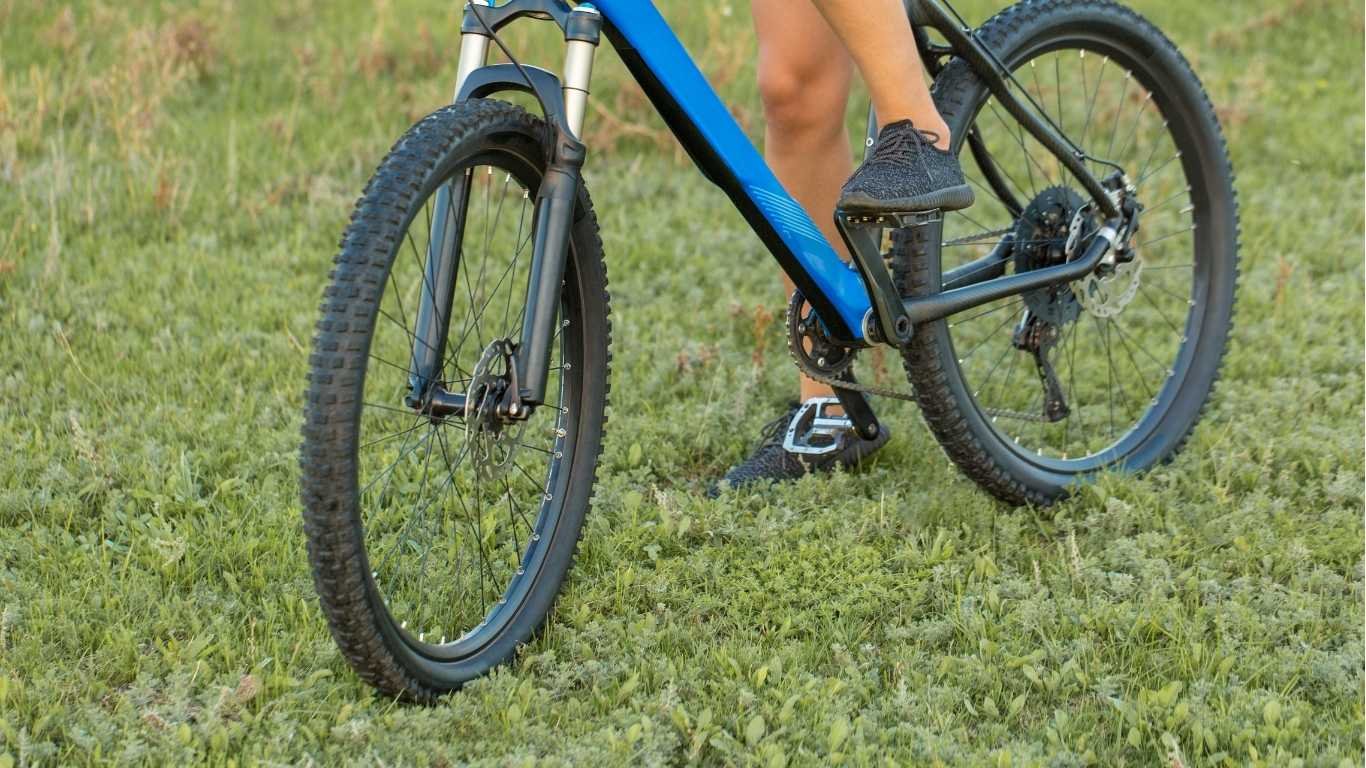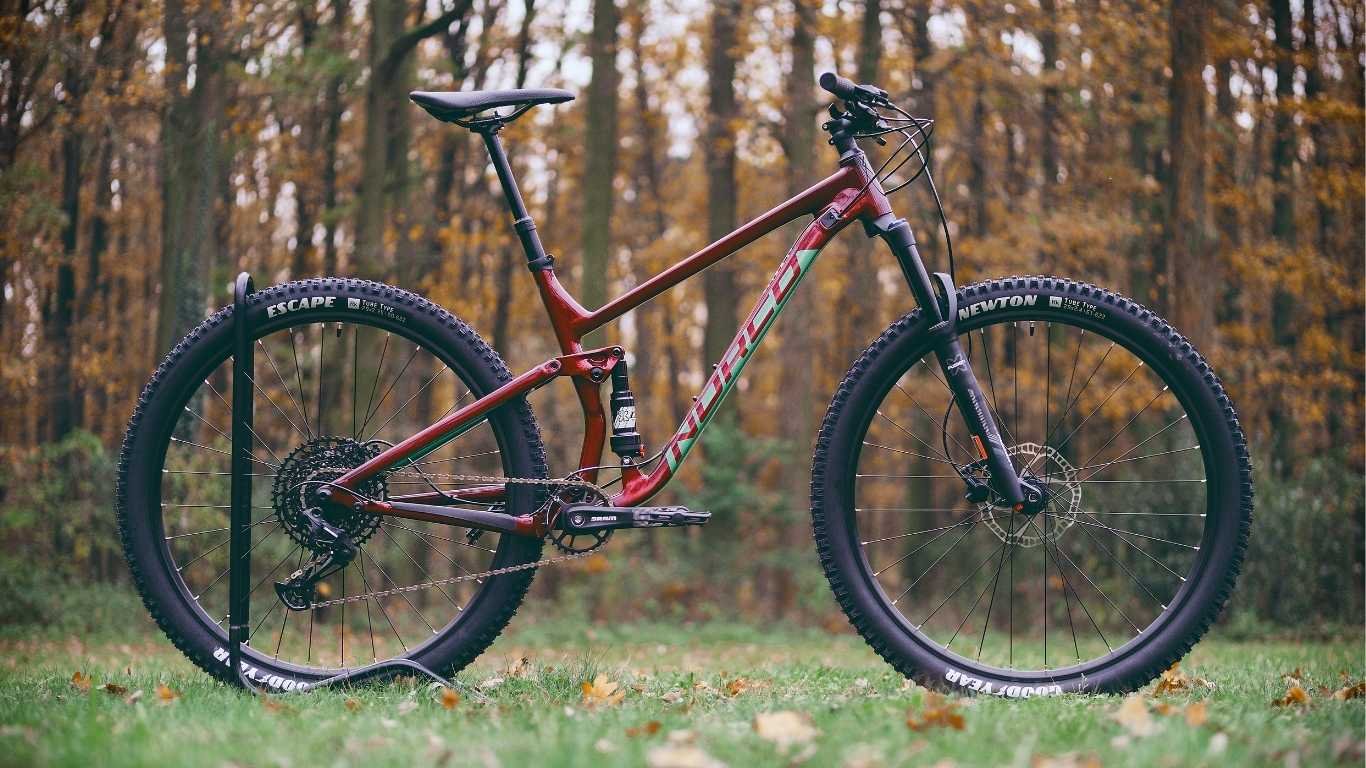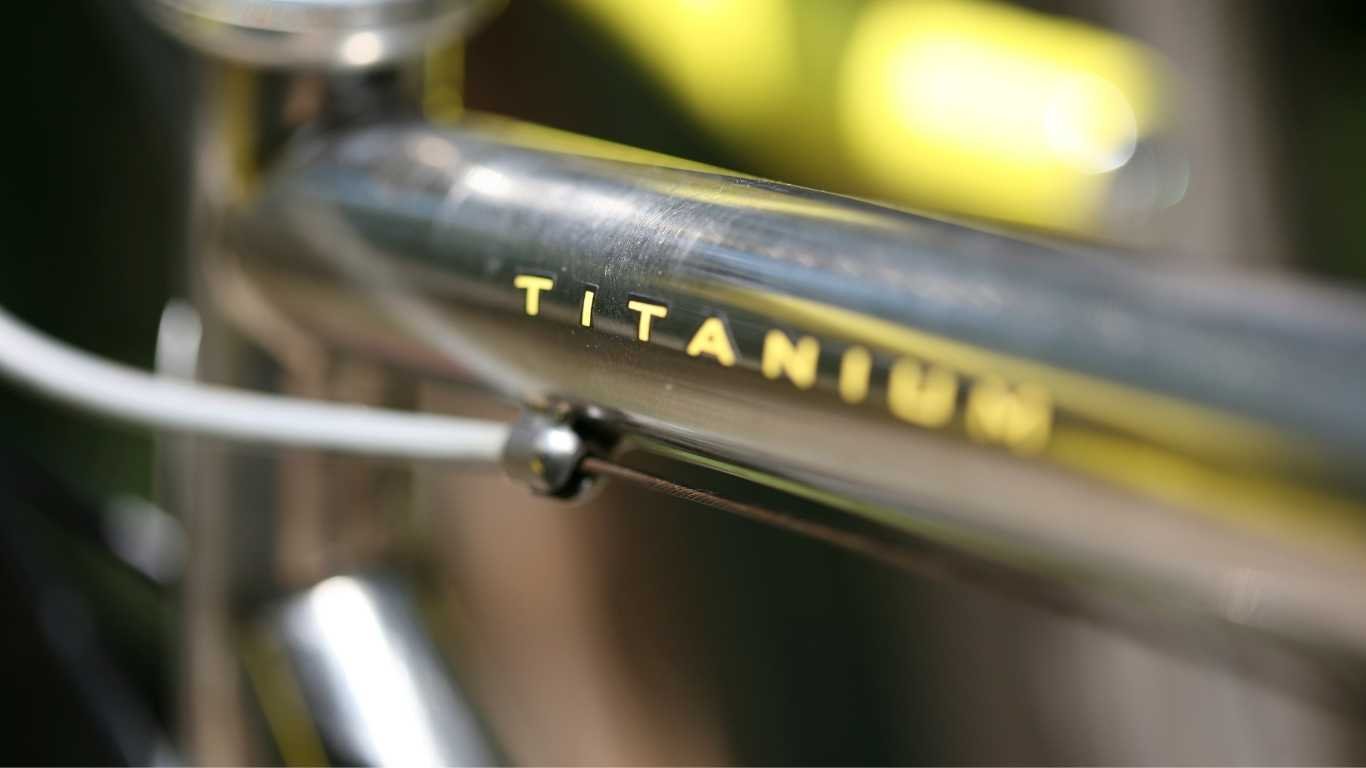If you want the straight-up answer: there’s no one “best material” — it depends on your budget, riding style, how much you push your bike, and how long you’ll keep it.
I’ve ridden all four — aluminum, carbon, steel, and titanium — and each one tells a different story when you hit the dirt.
Let’s break this down into real talk.
Why Frame Material Actually Matters

Every time you hit a rock garden, corner hard, or climb a steep trail, the frame is taking all that beating and translating it into motion.
It’s what connects you, the power, and the ground.
So the material changes a lot:
- Weight & stiffness decide how snappy it climbs.
- Flexibility decides comfort and how long you can stay on rough trails.
- Durability decides how long before you start seeing cracks, fatigue, or rust.
- Price decides how many trade-offs you’ll live with.
So let’s talk about each — the good, the bad, and what you actually feel when you ride.
Aluminum — Still the King for Most Riders

If you asked me what most riders should start or even stay with, I’d say aluminum. It’s the most balanced frame material out there.
Light, strong, doesn’t rust, and affordable — that’s why 70%+ of trail bikes still use it.
What you’ll like:
- Quick acceleration and solid pedaling response — feels direct.
- Easier to throw around on switchbacks.
- Handles jumps well and doesn’t get soft over time.
- Much cheaper than carbon or titanium.
What you won’t love:
- A little harsh on long, rocky trails.
- Doesn’t absorb small vibrations as much as steel or carbon.
- Over the years, it can fatigue (not suddenly break, but lose stiffness).
But overall, aluminum is your “Get It Done” frame. If you pair it with a solid suspension setup (I talked about this in Full Suspension vs Hardtail MTB), you won’t even feel the harshness much.
Most modern aluminum bikes weigh anywhere between 27–31 lbs, and good frames sit between $600–$1,200.
So if you’re on a budget and still want something reliable, this is it.
Carbon Fiber — Lightweight, Fast, But Costly

Carbon is the flashy one. The one everyone dreams about — and yeah, it’s earned that spot.
It’s light, it’s stiff, it’s smooth, and it looks damn good.
But the thing is — it’s not for everyone.
Carbon bikes are engineered using multiple layers of carbon sheets bonded with resin.
They can be tuned to be extremely stiff for racing or flexible in certain spots for trail comfort.
Why riders love carbon:
- Crazy light — some frames dip under 2.5 lbs.
- Vibration-damping, so you feel less tired on rocky sections.
- You’ll immediately notice faster climbs and less drag.
- Doesn’t corrode or rust.
The trade-offs:
- Expensive — most start around $2,000+ just for the frame.
- It can crack with a hard crash. Not something you’ll repair at home.
- Requires better maintenance habits (inspect after hard hits).
If you’re racing or you want a trail bike that’s razor-sharp and feather-light, go carbon.
But if you’re still learning or crash often, stick to aluminum first — your wallet will thank you.
Also, I’d recommend checking out Clipless vs Flat Pedals because your pedal setup totally changes how you feel that stiffness and control that carbon gives.
Steel — The Classic That Still Holds Up

Now let’s talk about the one that started it all — steel.
Old-school? Maybe. Outdated? Absolutely not.
Steel frames have this special kind of feel that’s hard to describe until you ride one.
What makes steel special:
- It flexes just the right amount — absorbs small vibrations.
- Feels solid and planted on trails.
- If you dent it, it’s fine. If you crack it, it can be welded.
- Lasts for decades if maintained correctly.
Steel bikes are heavier, yes. Usually 32–36 lbs. You’ll notice the weight on climbs.
But when you’re descending through roots, gravel, or uneven ground, it just floats.
If you love comfort, or do longer endurance rides, or even plan bikepacking trips, steel will win your heart.
The only real con — it can rust if you ignore it.
Keep it clean, store it dry, maybe use a rust inhibitor spray once in a while, and you’re good.
If you want to train for those longer rides, I’ve shared 9 practical tips in Build Stamina for Longer Mountain Bike Rides. Steel bikes pair perfectly with that kind of riding.
Titanium — The “Forever” Bike

Now we’re talking luxury. Titanium frames are the high-end blend of everything great about steel and carbon — comfort, strength, smoothness, and long life — just way more expensive.
A good titanium MTB frame usually costs $3,000–$5,000, sometimes more, depending on brand.
Why titanium is special:
- Doesn’t rust. Doesn’t fatigue. Basically doesn’t die.
- Rides like steel but lighter.
- Gorgeous raw finish — no paint needed.
- Comfortable for endless hours on the trail.
You buy titanium once, and it’ll probably outlive you. Seriously.
But it’s not for beginners or casual riders. It’s for someone who’s been riding a while, knows what geometry fits them, and wants a “final” bike to keep forever.
How Material Affects Ride Feel
It’s not just about “light vs heavy.” Each one truly feels different when you ride.
- Aluminum: Fast, stiff, reacts instantly. But you’ll feel chatter in your hands after a few hours.
- Carbon: Light and smooth, like gliding. It accelerates like crazy uphill.
- Steel: Soft, forgiving, you feel confident over rough roots.
- Titanium: Butter-smooth, strong, and quiet — feels expensive because it is.
You’ll even feel it while braking, cornering, or pedaling through a rough climb.
A steel or titanium frame flexes ever so slightly and gives back comfort. Aluminum is punchy, energetic, a little harsh. Carbon feels alive — quiet, clean, and crisp.
Frame Material vs Budget — What You Actually Get
| Frame Material | Weight Range | Typical Frame Cost | Full Bike Range | Ride Feel |
| Aluminum | 27–31 lbs | $600–$1,200 | $1,000–$2,500 | Quick, efficient, stiff |
| Carbon Fiber | 23–28 lbs | $2,000–$4,000 | $3,000–$7,000+ | Light, smooth, precise |
| Steel (Chromoly) | 32–36 lbs | $400–$800 | $900–$1,800 | Supple, comfy, durable |
| Titanium | 26–30 lbs | $3,000–$5,000 | $4,500–$10,000+ | Silky, premium, forever |
Now obviously, these numbers shift based on your components, wheels, suspension, etc.
But you get the idea — if you’re paying double, you’re mostly buying lighter weight and a refined feel.
My Recommendation: Don’t spend all your budget on the frame, though. A cheaper aluminum frame with a good drivetrain and suspension will outperform a pricey carbon frame with weak components every single time.
What You’ll Notice on Trails
Here’s how these materials actually behave when you ride them back-to-back:
- Aluminum: You’ll feel every pedal stroke. It climbs great. On descents, it’s fun but stiff. After 2–3 hours, hands start feeling buzzed.
- Carbon: You’ll feel the bike wants to fly. Effortless on climbs. Descending feels balanced, less tiring, but you’ll be more careful where you crash.
- Steel: Feels grounded. You can sit and spin through rocky trails, almost like a mini suspension built into the frame.
- Titanium: Every push feels rich — that silent, smooth energy. Climbs better than steel, rides more forgiving than aluminum, and you’ll rarely need to think about maintenance.
The biggest difference is how fresh you feel after 3+ hours on the saddle. Carbon, steel, and titanium simply keep your body happier longer.
Choose the Right Frame for You
Here’s how I’d simplify it:
- Aluminum frame: If you want the best all-around setup for the money. It’s great for most riders.
- Carbon: If you want to compete in a race, or want top-end performance.
- Steel frame: For comfort and repairability. Also great for adventure or long rides.
- Titanium frame: If money is not an issue for you, and you want one “forever” frame. Go with titanium, you ride often and plan to keep it for 10+ years.
Note: How your frame feels depends a lot on how you set up your suspension, tire pressure, and even pedals.
Key Takeaway
You can’t pick the “best frame material” from a chart — you pick it by how you ride.
If your trails are technical, climb steep, and you care about efficiency, go carbon or aluminum.
If you love comfort, adventure, and smoothness — go steel or titanium.
Whatever you choose, maintain it, ride often, and make it yours. A good frame isn’t just about performance — it’s about how it makes you feel every ride.
FAQs — Best Frame Material for Mountain Bike
Which frame material is the most durable for mountain bikes?
If you’re talking longevity, titanium wins easily. It doesn’t rust, doesn’t fatigue, and can take years of abuse without changing the ride feel.
But if we’re talking everyday durability for the price, aluminum is your most reliable option — strong, weather-resistant, and easy to replace if anything ever goes wrong.
Does frame material really affect comfort that much?
Absolutely. You’ll notice it especially on rough or long rides. Steel and titanium flex slightly and absorb trail buzz, keeping you fresher for hours.
Aluminum is stiffer, so it transfers more vibration, while carbon does a great job balancing both — light and comfortable, but more expensive.
Should beginners spend extra for a carbon frame?
Not really. Carbon’s advantages show when you already ride hard and push limits. If you’re a beginner, an aluminum frame is a good choice.
That’s because it is cheaper, durable, and still performs well.
Once you’re more skilled and start racing or riding more aggressively, then you can upgrade to carbon, it will be worth it, but for now, aluminum is fine.

Ali is the founder of Mountain Bike Insider and an passionate rider with years of hands-on experience in mountain biking. From testing gear to exploring trails, Ali writes based on real riding knowledge to help others make smart, safe, and enjoyable biking choices. Every guide is built on research, personal use, and a passion for the sport.







